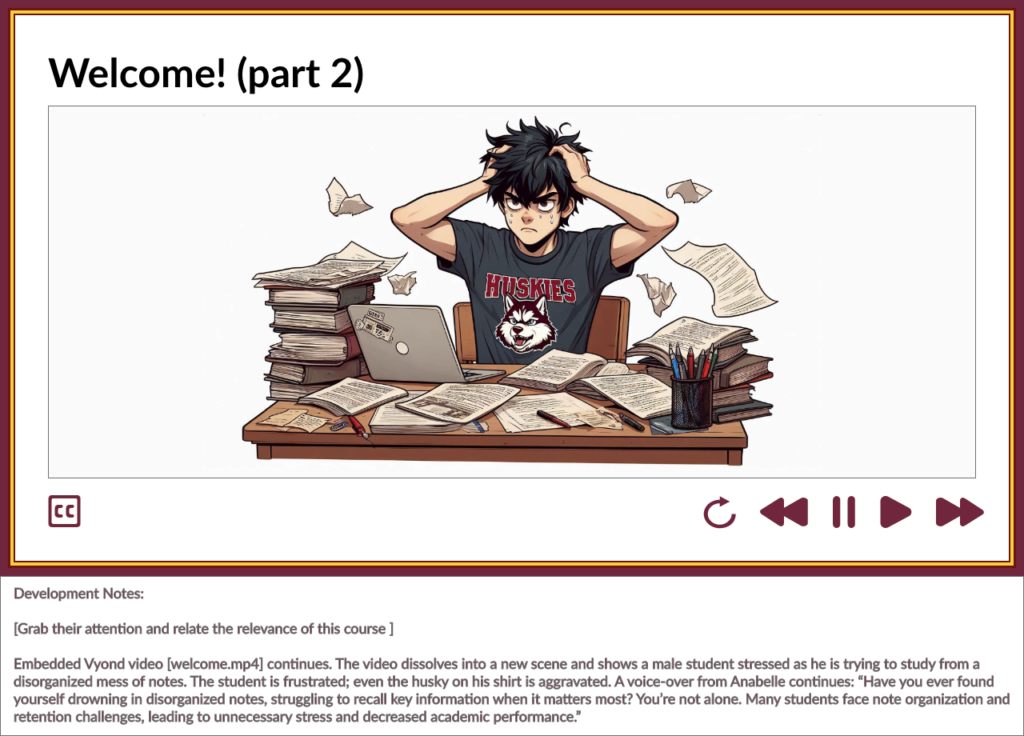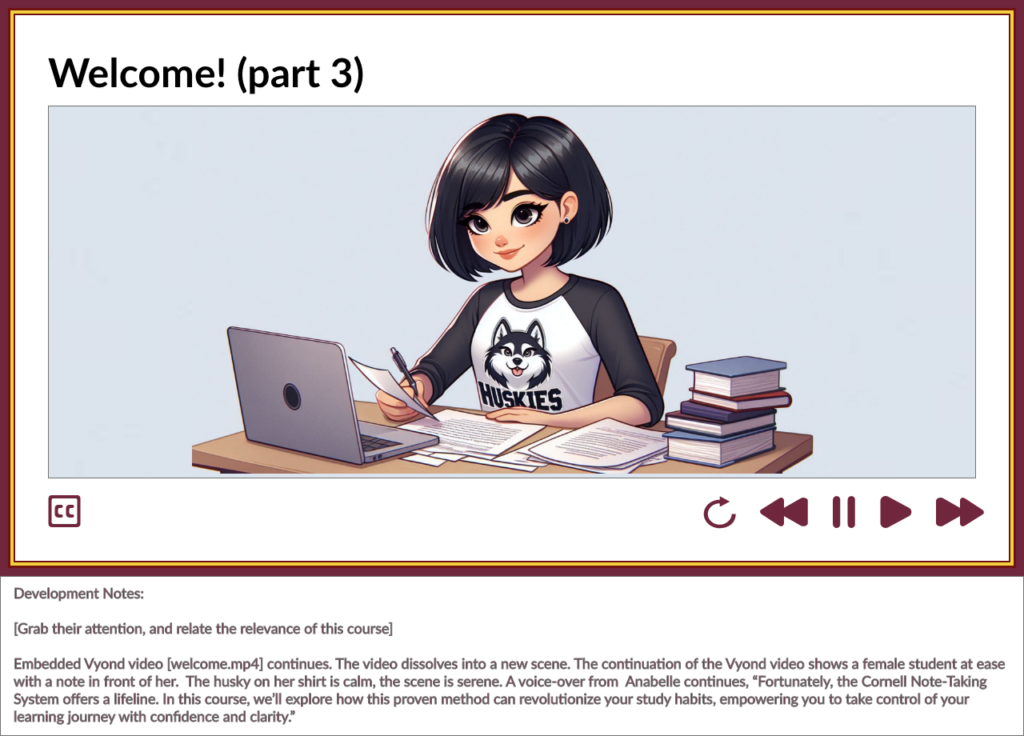
In the Spring of 2024, I took a graduate course in Instructional Design (ID), where I created a lesson to introduce new undergraduate students to the Cornell Note-Taking System. Don’t worry; while the formatting adheres to the university’s color scheme and could be a lesson from the university, none of the lessons the class created were unleashed on the students.
Before this assignment, the class had delved into a substantial amount of theory, and with the storyboard assignment, we could take these lessons and do something more hands-on than research. While the storyboard does not show a complete lesson, this assignment was an invaluable experience, and the skills I learned gave me the confidence to develop a course that would be exceptionally successful.
The requirements for the storyboard assignment included:
- Course introduction
- At least one terminal objective
- Summary
- An example practice item for a terminal objective
- Assessment items (with feedback) for a terminal objective
- Functional navigation
- The use of media (images, videos, etc.)
- Included interaction (an activity)
I built the lesson following a logical sequence, beginning with an introduction to the Cornell Note-Taking System and guided practice and application exercises. Each step was built upon the previous one, creating a cohesive learning experience. The lesson broke down the task into manageable chunks for learners to understand and practice, and clear learning objectives were outlined at the beginning, guiding learners’ focus throughout the lesson.
While the course ends with an assessment, a fully developed storyboard would show assessments integrated throughout the course, gauging understanding and proficiency and reinforcing material retention.
I employed various learning strategies throughout the lesson to cater to different learning styles, including direct instruction, modeling, guided practice, and reflection. Of the connections I enjoyed was creating the stimulating prior knowledge and relevance to the learner parts at the beginning of the course. The vision included showing a student frustrated and unable to find his notes, followed by another student who was calm and “put together” as she was using the Cornell System. I had a little fun with this; the frustrated student’s t-shirt shows the school mascot aggravated, and the calm student’s t-shirt shows the school mascot calm and serene. Admittedly, effective note-taking and organization are not the most exciting subjects to learn about. I took the opportunity to connect the material’s relevance to the learner, hopefully making the material more engaging.


Overall, this course provides a comprehensive approach to teaching the Cornell Note-Taking System, making it an essential tool for educators and learners. With the skills I learned during the course, I am confident that I can create a course that will be successful in helping learners master this essential skill.
One of the requirements of this assignment was to use Adobe XD and provide functional navigation. Of course, using Adobe XD helped to relate the lesson vision of an immersive learning experience to enhance engagement and retention of the material.
You can interact with the Adobe XD storyboard navigation here or download the PDF below.
